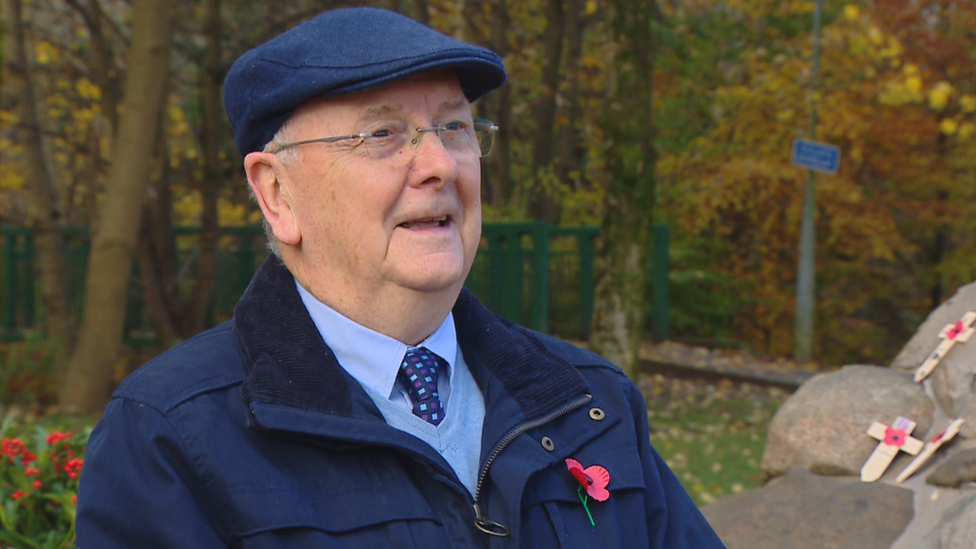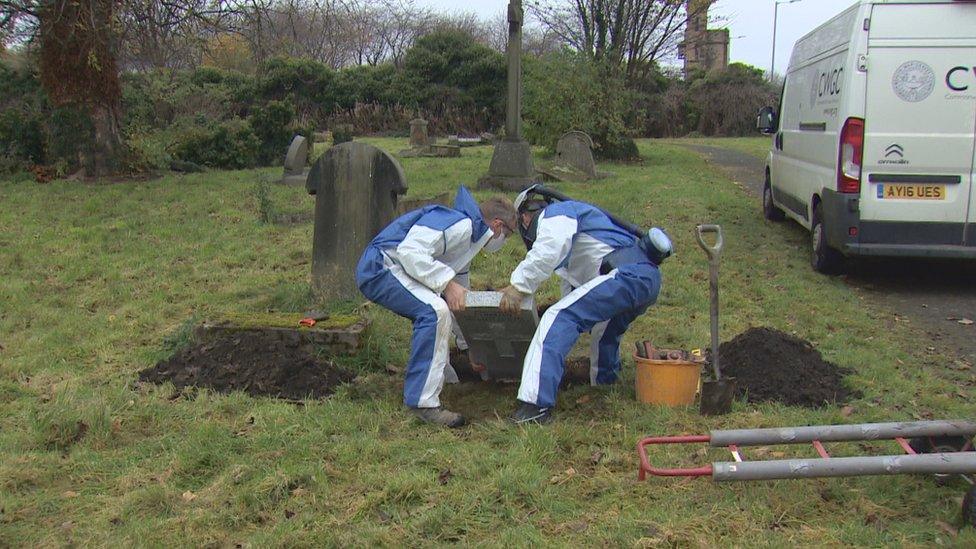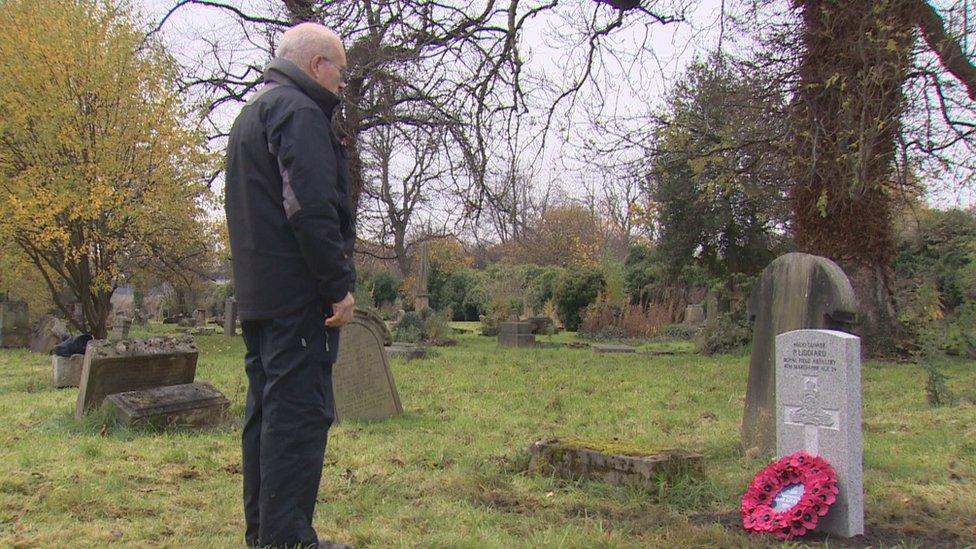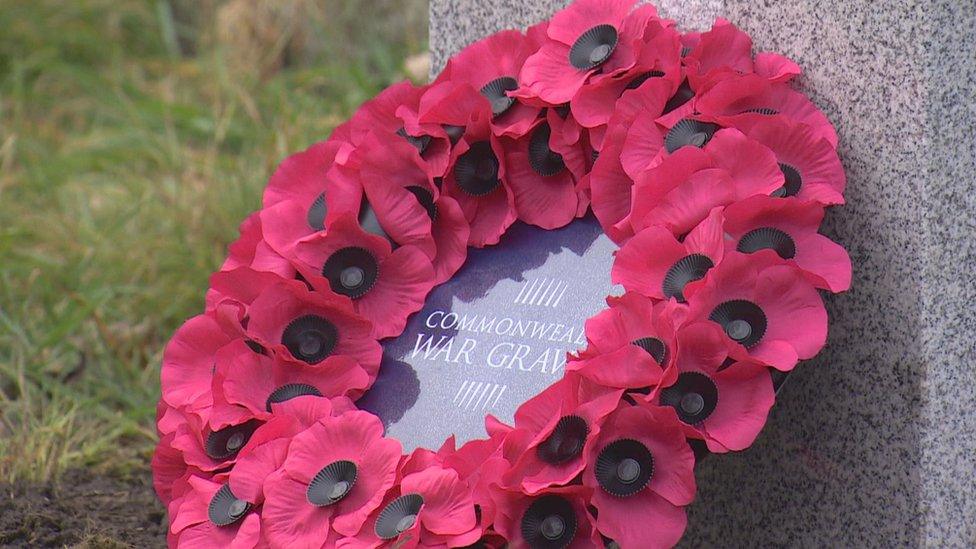Armistice Day headstone for soldier's unmarked grave
- Published

Peter Liddiard was previously buried in an unmarked grave in Glasgow's Southern Necropolis cemetery
A headstone has been erected over the unmarked grave of a Scottish soldier more than a century after his death during World War One.
Gunner Peter Liddiard did not have an official war grave at his resting place in Glasgow.
Since his death in 1918, the 24-year-old from the Gorbals' grave has remained unmarked.
Now a shining slab of granite commemorating him stands among the weather-beaten headstones in the city's Southern Necropolis.
Peter Liddiard was a factory worker before he joined the Royal Field Artillery in November 1914 and was sent to France the following year.
He fell ill on the frontline, was sent back to the UK and received a medical discharge. He died in hospital in March 1918.
For reasons no-one now knows, the military authorities were not informed of his death, which meant his name was not on the list of casualties submitted to the Commonwealth War Graves Commission after the conflict came to an end on 11 November 1918.
He lay forgotten until a member of the Scottish Military Research Group came across his name in Glasgow's Roll of Honour, the city's main record of casualties from WW1.

John Houston made the discovery about about Gunner Liddiard more than a century after his death during WW1
With the help of a UK-based project called In From The Cold - which tries to find casualties of war who do not have officially-recognised war graves - 74-year-old John Houston discovered that the Commonwealth War Graves Commission had no record of Gunner Peter Liddiard.
Through his death certificate and pensions record, Mr Houston established that the soldier died from tuberculosis contracted during active duty on the Western Front.
Peter Liddiard was a married man but died without children and the researchers so far have not been able to find any of his descendants.
Mr Houston passed the information to In From The Cold, who contacted the War Graves Commission, and in-turn consulted the Ministry of Defence.
It was confirmed that the artilleryman had died because of his war service, entitling him to a headstone.

The headstone being put in place on the soldier's unmarked grave
The whole process took four years.
Mr Houston said: "You get a tremendous buzz when you find somebody who's not commemorated, you get a tremendous feeling of elation.
"They served their country and they should be recognised and there should be a headstone for them. It should be acknowledged they gave their life in service of their country."
The War Graves Commission's regional manager in Scotland, Iain Anderson, said the passing of more than a century made no difference.

A wreath laid at the new gravestone for Gunner Peter Liddiard, who died during WW1
"Our remit is to mark all the war graves all over the world, from World War One and World War Two, that's in our charter and our commitment," he said.
"If you died as a result of your war efforts you are entitled to a war grave. He died from TB as a result of his war service. Not everybody who has a war grave was killed fighting in action.
"It's important for the Commission to carry on the work we are doing and for the country to remember those who died for us, in those wars and other conflicts."

More headstones will be erected in the coming months for unmarked graves
Terry Denham from In From the Cold said that their work had uncovered 291 graves in Scotland, mostly from WW1.
The majority are those of servicemen and women whose names were missing from the official casualty rolls.
Four more headstones will be erected over unmarked graves in Scotland over the coming months.